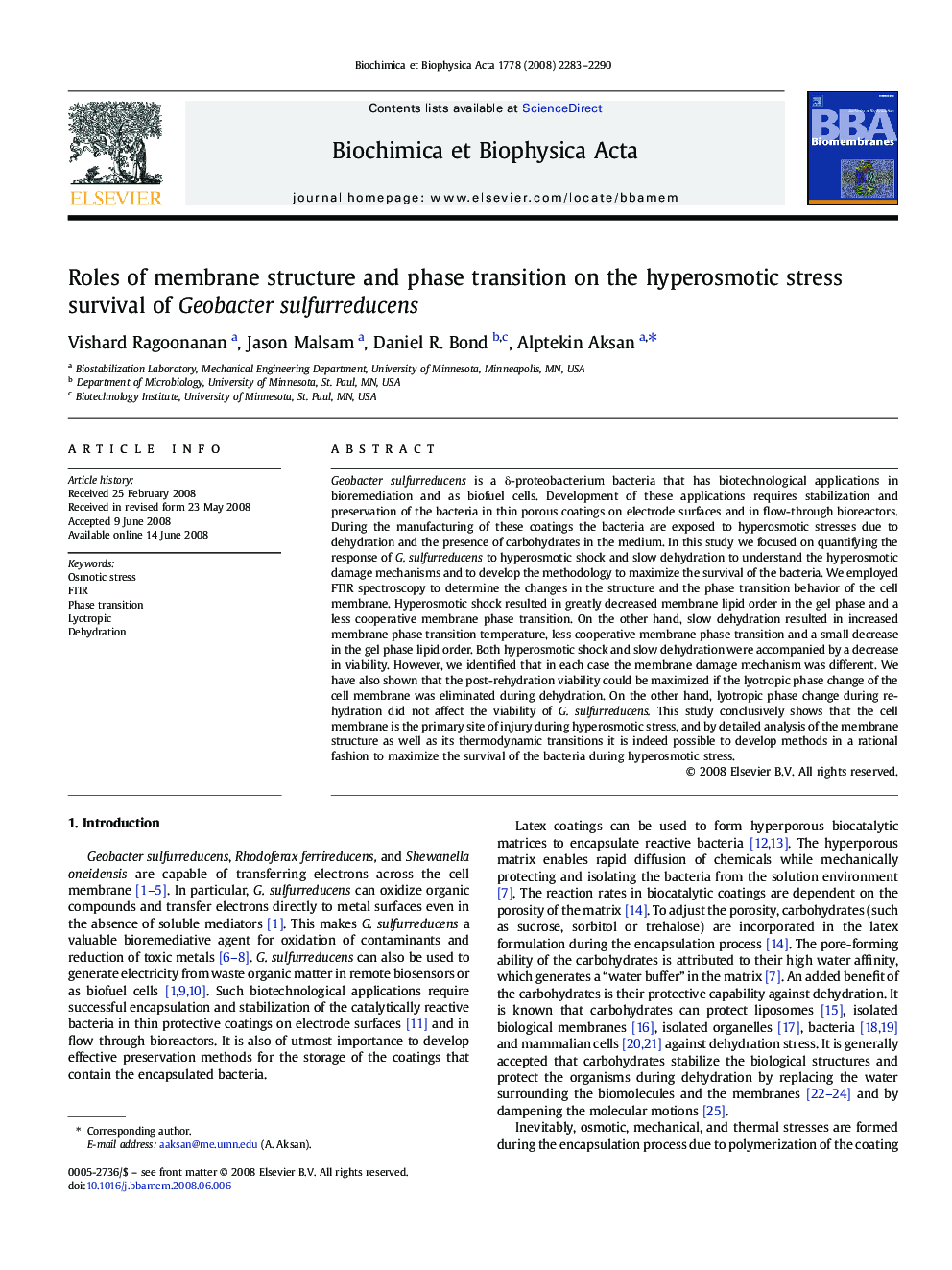| Article ID | Journal | Published Year | Pages | File Type |
|---|---|---|---|---|
| 1945467 | Biochimica et Biophysica Acta (BBA) - Biomembranes | 2008 | 8 Pages |
Geobacter sulfurreducens is a δ-proteobacterium bacteria that has biotechnological applications in bioremediation and as biofuel cells. Development of these applications requires stabilization and preservation of the bacteria in thin porous coatings on electrode surfaces and in flow-through bioreactors. During the manufacturing of these coatings the bacteria are exposed to hyperosmotic stresses due to dehydration and the presence of carbohydrates in the medium. In this study we focused on quantifying the response of G. sulfurreducens to hyperosmotic shock and slow dehydration to understand the hyperosmotic damage mechanisms and to develop the methodology to maximize the survival of the bacteria. We employed FTIR spectroscopy to determine the changes in the structure and the phase transition behavior of the cell membrane. Hyperosmotic shock resulted in greatly decreased membrane lipid order in the gel phase and a less cooperative membrane phase transition. On the other hand, slow dehydration resulted in increased membrane phase transition temperature, less cooperative membrane phase transition and a small decrease in the gel phase lipid order. Both hyperosmotic shock and slow dehydration were accompanied by a decrease in viability. However, we identified that in each case the membrane damage mechanism was different. We have also shown that the post-rehydration viability could be maximized if the lyotropic phase change of the cell membrane was eliminated during dehydration. On the other hand, lyotropic phase change during re-hydration did not affect the viability of G. sulfurreducens. This study conclusively shows that the cell membrane is the primary site of injury during hyperosmotic stress, and by detailed analysis of the membrane structure as well as its thermodynamic transitions it is indeed possible to develop methods in a rational fashion to maximize the survival of the bacteria during hyperosmotic stress.
